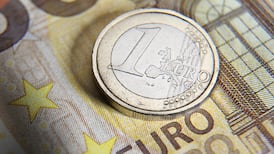Long lines and delays at currency houses yesterday marked the return of a floating peso in Argentina after nearly 11 years amid signs of central bank intervention to stop the dollar surging out of control.
In early trading, the US currency had climbed about 15 per cent, to around 2.4 pesos. However, it quickly lost ground, suggesting the central bank had dipped into its $14 billion (€15.9 billion) in reserves it says it will use to offset demand for the dollar.
Some bureaux de change in Buenos Aires were quoting the US currency at just below 2 pesos in the afternoon. The main stock market index fell 8.5 per cent to 418.48 in early afternoon trading as Argentines sold stocks to buy dollars.
The Argentine currency was last month devalued by 30 per cent, formally ending a 10-year one-to-one peg with the US currency. However, until yesterday it traded at a formal commercial rate of 1.4 to the dollar and a parallel rate set by the market, although there was a freeze on currency operations last week.
Analysts say the peso's fall was contained by a combination of central bank intervention, weak liquidity and a continuation of the capital controls introduced in December.
Yesterday's return of the floating rate peso was accompanied by strict controls on dollar sales, including a ban on hard currency operations by banks in greater Buenos Aires, and paperwork designed to slow the turnover of customers.
"We didn't expect a sharp rise in the dollar, mainly because of the amount of reserves that the central bank has," said Mr Norberto Sosa, economist at Raymond James, the stockbroker.
Yesterday's move to end the dual currency system is one of a series of measures designed to satisfy the International Monetary Fund.










